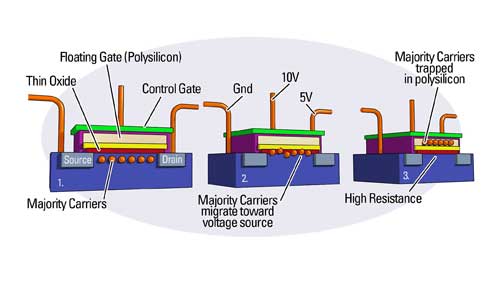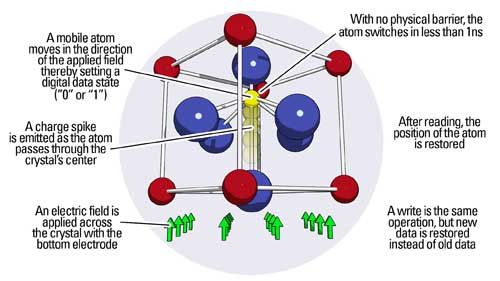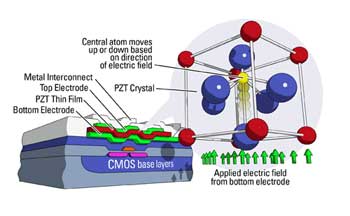Automotive safety systems will become more sophisticated in the coming years. This trend affects the attachment rate and the complexity of the airbag system and the vehicle stability control system. As the electronic portion of these systems becomes more and more important, the capacity requirements for semiconductor memories also increase. This article outlines the issues that should be considered when designing a new generation of airbag system storage solutions.
This article refers to the address: http://
The current automotive airbag system introduces two major innovations. First, the new airbag system adds "intelligence": unlike the previous systems, the maximum deployment force is used. As if all accidents and passengers are exactly the same, the new system determines the deployment of the airbag based on the specific parameters of the accident and passengers. These parameters may include the severity of the collision, the weight of the passenger, and the position of the seat relative to the airbag. This variable deployment force will be greatly welcomed by those who have experienced the impact of ordinary airbags and cause unpleasant experience. The smart airbag also identifies if the passenger seat is empty to determine the need to use the passenger airbag. Considering the increasing number of airbags per vehicle plus the cost of replacement even in the event of a minor accident, this innovative technology will help users save considerable repair and insurance costs.
Second, more and more vehicles are equipped with an accident data recorder (EDR) to collect collision-related information, similar to the aircraft "black box." The EDR function is typically included in the airbag electronic control unit (ECU). This arrangement is natural because the EDR does not have the survivability requirements of the aircraft black box. The airbag controller mainly receives the input information of each important sensor. The vehicle manufacturer also pointed out that there is no room to install a stand-alone EDR.
The memory requirements of these two airbag storage applications are quite high, but they vary greatly from one another. Since in the event of a serious accident, the system is likely to lose power, a non-volatile memory is required. Accident reconstruction means that relevant data before and after the incident must be stored in a reliable non-volatile memory that can be written by the system.
On the "smart airbag" system, ECU designers want to use the appropriate deployment force for specific accidents. This requires not only acceleration information but also passenger information. The new smart airbag system has a unique requirement for storage, which requires the recording of passenger information up to the time of the accident, including seat position and passenger weight. In order to obtain a reliable record of passenger conditions before an accident, it is necessary to continuously store information. The parameter data sent to the airbag ECU is generated by the acceleration sensor and sensor inside the vehicle. This contiguous storage requires storage technologies that are far more frequent than traditional flash writes.
The key to EDR technology is the amount of data required and the time it takes to store it. The new specification will greatly expand the data that needs to be collected. In the event of a serious accident, there is a high probability of a power outage. In this case, the EDR system must save the data before the system power is lost. In an accident, power can suddenly be lost, and traditional non-volatile storage solutions take a long time to write new information.
Non-volatile ferroelectric memory (FRAM) provides the technical ability to address these needs. It offers reliable non-volatile storage as well as other non-volatile solutions. It is especially outstanding in that it has a lot of rewritable times and an extremely fast write speed.
The 5V operating voltage FRAM memory with serial peripheral interface (SPI) is most often used in airbag applications. These devices can be written at very high bus interface speeds, with more than 1 trillion (1 followed by 12 zero!) erases, enough for smart airbags to be continuously written to provide seamless passenger data. recording. Serial speeds from 5MHz to 20MHz FRAM and no-delay writes allow the host processor to store data as fast as possible with little risk of loss of information. FRAM's non-volatile features, unlimited number of erases, and fast data write capabilities make it an ideal memory for next-generation airbag systems.
The main non-volatile memory technology used in previous automotive applications was floating gate devices such as EEprom or flash memory. The floating gate device isolates the polysilicon gate from the trench through a layer of SiO2 film. To program the device, a high voltage is generated across the control gate so that the electrons get enough kinetic energy to penetrate the isolation layer and accelerate the electrons (N-channel device) to the source. (see picture 1).

A depletion region is formed in the channel such that at a particular gate voltage, the programmed portion is placed at "off (higher impedance)" and the device that is not programmed or not erased is "on" (lower impedance)".
As the complexity of automotive design requirements increases, the limitations of floating-gate storage technology become more apparent. For example, its programming takes a few milliseconds of ms, which has been a very long time for high security applications. In the event of a collision, the power supply is quickly lost and almost no information can be saved to the floating gate device in time.
The programming process is also destructive to the isolation layer, so the number of erases and writes for such devices is very limited, typically between 100,000 and 1 million. As far as the passenger sensor is concerned, the number of data updates is too frequent even for the upper limit of 1 million times. For a typical write speed requirement of one second per second, the floating gate device will reach its useful life in less than 12 days. If the data is buffered into the RAM and then written to the floating gate non-volatile memory during power-off, the write speed problem will occur in the EDR, so it is not a really effective solution.
In the smart airbag system, it is necessary to store not only the data in the collision accident but also the data before the accident. Using scrolling logs to store pre-collision data is ideal, but for floating-gate memory devices, this solution has proven problematic because of their limited number of erases. Since the airbag module has a large capacitance to store enough energy to activate the airbag, there may be enough residual power to write the data in the buffer to the non-volatile memory after the accident. The amount of data that can be written depends on the amount of power that is still available, that is, the residual energy in the capacitor and the write speed of the memory. Typical 2K byte floating gate memories can write up to about 4 bytes per 5us. Therefore, it takes more than one second to write the entire floating gate memory.
FRAM can solve the above problems by providing extremely high erasing times and speeds. Ramtron's FRAM technology combines ferroelectric materials with standard semiconductor chip design and manufacturing technologies to introduce non-volatile memory and analog/mixed-signal products. These products feature fast read/write performance, virtually unlimited erase and write times, and ultra-low power consumption in static RAM (SRAM), and the ability to safely store data in the event of a power loss, a feature not possible with standard RAM technology.
The FRAM cell is fabricated in an industry standard CMOS process and is formed by a ferroelectric crystal between two electrode plates, similar to the construction of a DRAM capacitor. But unlike general volatile memory, which stores data as a charge on a capacitor, FRAM stores the data in a ferroelectric crystal.

When a certain electric field is applied to the ferroelectric crystal, the central atom of the crystal lattice moves in the crystal in the direction of the electric field under the action of the electric field, which causes a charge spike through an energy barrier. The internal circuit senses this charge spike and sets the memory. After the electric field disappears, the center atom remains in its original position, thus preserving the state of the memory. (See Figure 2).
The ferroelectric film is placed on top of the CMOS substrate and placed between the two electrode plates, using a metal interconnect and passivation to complete the ferroelectric manufacturing process. (See Figure 3).
Therefore, the FRAM memory does not need to be refreshed periodically, and the data will still be saved after the power is turned off. It's fast, and there's actually no life limit. These features make it possible to write data at very small intervals to ensure the correct state of the saved state. For example, a 16-Kbit (2K byte) device can be written in 3.3 microseconds with ultra-low power consumption. In addition, it can refresh 10,000 times per second (write every 100 microseconds) and has a working life of up to 25,000 hours.

Recently, Hyundai Autonet decided to use non-volatile ferroelectric random access memory (FRAM) in its next-generation smart airbag system, which is the advantage of FRAM technology gradually accepted by top automotive system suppliers. And another powerful proof for high security applications. Hyundai Motor is another well-known company that uses FRAM technology to provide "intelligence" for smart airbag systems and related crash data recorders after eight other car manufacturers in the US, Asia, Japan and Europe.
Install on Auto/Aircraft, Auto Signal, Recreation Vehicles, Trucks/ Trailers, Marine/ Boats,Motorbikes etc.
Be used as Direction light, emergency vehicle lamp, dashboard light, Dash light, instrument light, indicator light, stop lamp, brake light, tail Lamp, side lamp, parking lamp, tag lamp, license plate light, turn signal lamp, dome lights, interior lighting, warning indicator, etc.
Yacenter has experienced QC to check the products in each process, from developing samples to bulk, to make sure the best quality of goods. Timely communication with customers is so important during our cooperation.
If you can't find the exact product you need in the pictures,please don't go away.Just contact me freely or send your sample and drawing to us.We will reply you as soon as possible.
Brake Light Wiring,Brake Light Wiring Harness,Brake Light Harness,Christmas Light Wire Harness
Dongguan YAC Electric Co,. LTD. , https://www.yacenter-cn.com